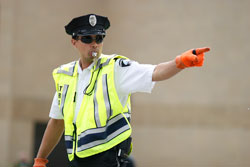Sesame Street has always been a show that focuses on learning and inclusivity, and their new character Julia is no different. This spring, the show welcomed their first autistic cast member to the television screen. According to the Huffington Post, Julia has been included on their Digital Storybook series since 2015, but have decided to make her a regular cast member as of late.
According to the Center for Disease Control and Prevention (CDC), one in every 68 children in the United States is diagnosed with autism spectrum disorder. “The inclusion of this character is not only helping with awareness outreach, but also disability representation,” explained Dr. Stacy Lauderdale, a professor in the school of education.
“More diversity in television is always a good thing, and disabilities are a part of that diversity,” said Lauderdale. “Older children with autism who are higher functioning understand what makes them different and suffer more from depression; [with the addition of Julia] more representation can help others understand [autism],” Lauderdale said.
Chelsea Byrne, a junior education student, noticed that this representation is an increasing trend. She said, “The ABC show Switched at Birth represents the deaf community by making the leads of the show deaf. Speechless has a main character who has cerebral palsy. Society and television have come a long way with including individuals with disabilities and giving them a voice on TV.”
Unlike her animal-like companions, such as Big Bird and Oscar the Grouch, Julia is a shy four-year-old girl. She has green eyes, orange hair, and loves to paint and pick flowers. She often groans and echoes what the characters around her are saying.
“Children without autism may want to form friendships and understand their classmates with autism, and this could help them understand autistic behavior,” Lauderdale commented.
Her designers wanted to highlight traits exclusive to children with autism, without making her the posterchild for all disabilities. Loud noises scare Julia, and she flaps her arms around when she is excited. The creators consulted different organizations who work alongside families with autistic children to decide which features were best to highlight.
John Bazley, a senior education student, said, “Sesame Street has always been a good learning tool for children and I think introducing a character with autism will surely change the perception of children with autism, both among other children and adults.”
Carolyn Chirichello, Assistant Director of the Department of Disability Services, said, “[children with autism] will feel included and part of [the show] and can identify with someone who has a disorder that they may have, even though they may not know all of the terms and diagnostics of it,” Chirichello said.
Donna Dolphin, an associate professor of communication and advisor for Hawk TV, said, “Imagine entire generations growing up with an autistic friend, albeit a muppet. If so, very many people who are not on the spectrum could grow up understanding a little bit about the lives of those who are.”
“Perhaps eventually, autistic people would face less of a challenge to receive necessary services, education, employment, and understanding,” Dolphin explained.
Dolphin, who has a relative with autism, said how increasingly difficult it is for students in his age group to understand him. “He’s 17 years old and in high school, that’s hard enough. Add autism to that and life is pretty challenging,” she explained.
Stacy Gordon, the puppeteer of the new character, has a son who also has autism. According to Huffington Post, she said that she wishes the character had been around when her son was of Sesame Street age. She argued that if her son’s peers grew up seeing these behaviors on television, they might not have been so frightened.
IMAGE TAKEN from npr.org



